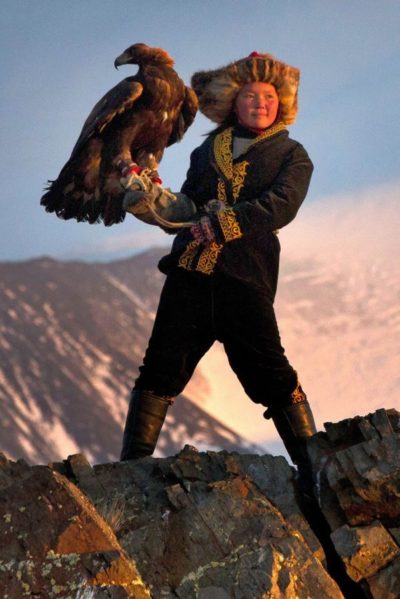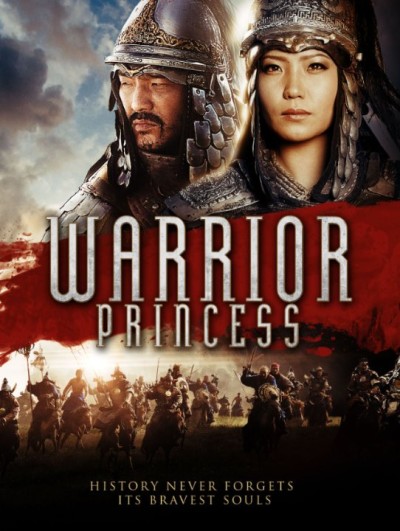★★★★
“Where eagles dare.”

 No matter how bad-ass you are, you’ll never attain “13-year-old Mongolian girl, standing astride a mountain, holding the trained golden eagle she raised from a chick, after climbing down a cliff to get it” levels of bad-ass. That’s what we have here, folks, in this documentary about Aisholpan. She’s a Mongolian teenager who wants to become an eagle huntress, a profession traditionally reserved for the male lineage. Her father Rys learned the skills necessary (and, presumably, inherited the really large, very well-padded glove) from his father, and so on.
No matter how bad-ass you are, you’ll never attain “13-year-old Mongolian girl, standing astride a mountain, holding the trained golden eagle she raised from a chick, after climbing down a cliff to get it” levels of bad-ass. That’s what we have here, folks, in this documentary about Aisholpan. She’s a Mongolian teenager who wants to become an eagle huntress, a profession traditionally reserved for the male lineage. Her father Rys learned the skills necessary (and, presumably, inherited the really large, very well-padded glove) from his father, and so on.
In the absence of a suitably-aged son, and given Aisholpan’s interest, Rys is happy to show her the ropes. Literally. As in the ones used to prevent her falling off the steep cliff-face she has to descend to pluck her eaglet from its home. For, as we learn, there’s only a brief period between the chicks being able to survive away from their mother, and them leaving the nest, during which they can be taken. We also discover, there’s apparently no word in Mongolian for “child endangerment.” There’s then the training process, as the bird grows up, for instance to get it to come when called. Though “politely asked” would be wiser than “called”. You don’t order around something like the full-sized and scary creature shown on the right.
The first dramatic moment is Aisholpan’s participation in the annual golden eagle festival, which takes place in a nearby (by Mongolian standards – it’s only a day’s ride away) town. She’s not only the youngest participant, she’s the first woman ever to take part. Some of the veterans and elders are interviewed, and are not exactly happy about it. Though their opposition doesn’t appear to go any further than mild levels of harumphing; it’s not as if there’s any active attempt to stop her participation. This could be because the film does seem to over-state Aisholpan’s uniqueness for the sake of cinematic drama. History actually provides much evidence for her female predecessors.
However, there’s still an enormous amount here to appreciate and enjoy, not least a plethora of panoramas, sweeping across the staggeringly beautiful Mongolian plains. You also get a new respect for eagles, creatures whose size is not apparent in the air, and only when you see one perched on the heroine’s arm, it’s razor-sharp beak inches from her eye. Then there’s Aisholpan herself, who clearly gives not one damn for any constraints “tradition” might want to place on her, and goes about her eagle-training business with an infectious smile. Oh, and she’s studying to be a doctor when she grows up. If she went on her rounds with an eagle on her arm, so much the better, I’d say.
Finally, we get to bask in the gloriously stunned silence of the elders, after Aisholpan has demonstrated her skills (and, admittedly, those of her avian familiar) at the tournament. They then point out that, well, anybody – even a girl – can do well enough in the comfortable setting of a field. She could never withstand the harsh conditions faced by real hunters, in the mountains. Guess where Aisholpan’s next stop is? Yep. She takes her bird and heads off into those mountains, through snowdrifts which reach up to the flank of her horse, to hunt foxes for their fur. In terms of teenage empowerment, it sure beats getting a tattoo and hanging out at the mall.
Dir: Otto Bell
Star: Aisholpan Nurgaiv, Rys Nurgaiv, Daisy Ridley (narrator)





